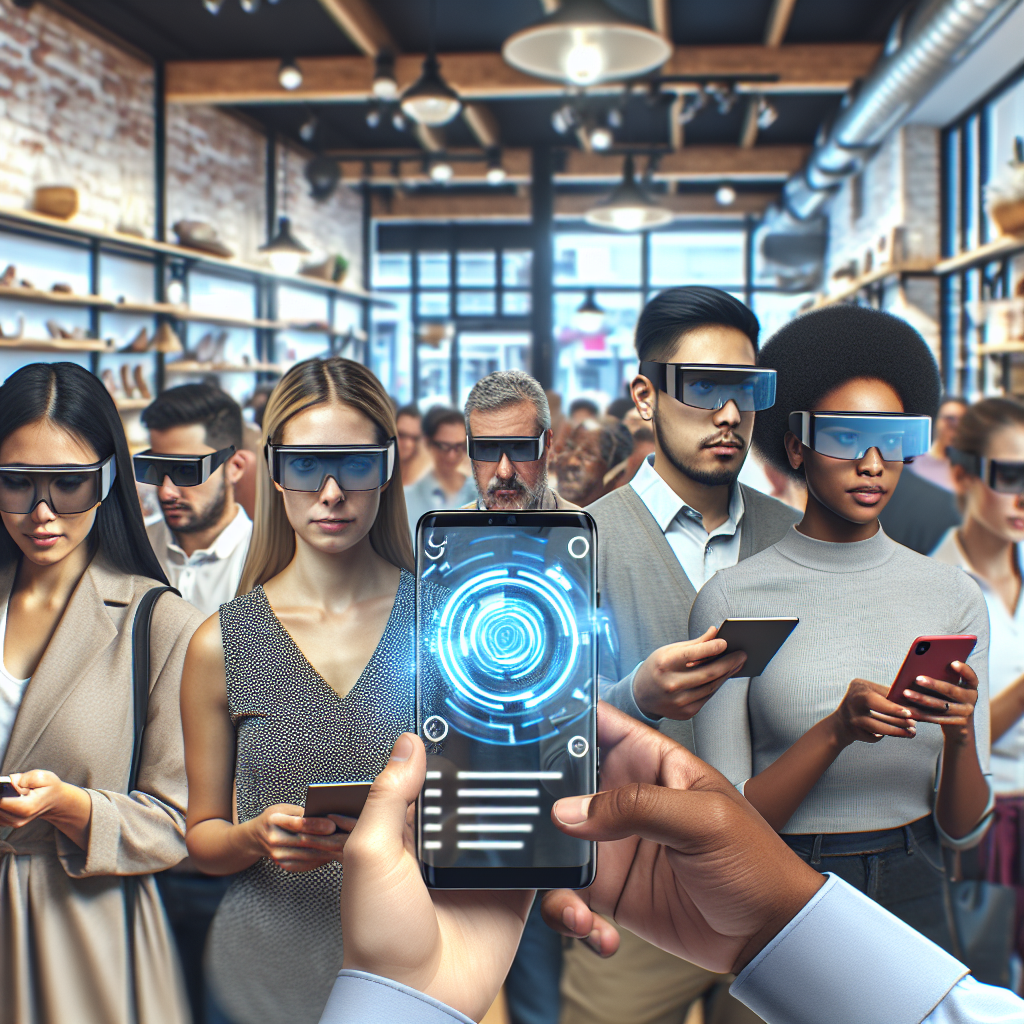Introduction
In recent years, augmented reality (AR) has emerged as a game-changer for various industries, particularly in retail. As consumers increasingly look for unique shopping experiences, retailers are harnessing the power of AR to create immersive environments that enhance customer engagement and satisfaction. This article explores how augmented reality is reshaping retail and providing unparalleled customer experiences.
What is Augmented Reality?
Augmented reality is a technology that overlays digital information, such as images, videos, or sounds, onto the real world through devices like smartphones, tablets, or AR glasses. Unlike virtual reality, which creates an entirely artificial environment, AR enhances the existing environment, providing users with a unique blend of real and virtual interactions.
The Role of Augmented Reality in Retail
1. Transforming the Shopping Experience
AR technology is redefining the shopping journey by making it more interactive and engaging. Customers can visualize products in their real environments before making a purchase. For example, furniture retailers like IKEA use AR apps that allow customers to see how a piece of furniture will look in their home.
2. Virtual Try-Ons
One of the most significant advantages of AR in retail is the ability to offer virtual try-ons. Customers can try on clothes, accessories, sunglasses, or makeup virtually, eliminating the need to physically try on each item. Brands like Sephora and Warby Parker have successfully integrated this technology, allowing customers to experiment with different looks from the comfort of their homes.
3. Enhanced Product Visualization
AR allows retailers to provide rich product information and 3D visualizations. Brands can create virtual showrooms or interactive displays, enabling customers to explore products in detail. This not only enhances the understanding of the product but also increases customer confidence in their purchase decisions.
4. Gamification of Shopping
Gamification is an excellent strategy for engaging customers. Retailers can create AR experiences that incorporate elements of gaming, such as rewards, challenges, and competitions. For instance, retailers can develop treasure hunt games that encourage customers to explore the store while interacting with AR content, making the shopping experience more fun and memorable.
Benefits of Using Augmented Reality in Retail
1. Increased Customer Engagement
AR experiences captivate attention and engage customers in ways traditional shopping methods cannot. By incorporating AR into their marketing and sales strategies, retailers can create memorable interactions that foster brand loyalty.
2. Higher Conversion Rates
Augmented reality has shown to positively impact purchasing behavior. Studies indicate that customers who engage with AR content are more likely to make a purchase, as the technology helps them visualize the product better and reduces uncertainty.
3. Reduced Returns
One of the significant challenges in retail is the high rate of product returns due to mismatch in expectation versus reality. With AR, customers can see how products look and fit in real-time, leading to more informed decisions and reducing the likelihood of returns.
4. Competitive Advantage
As AR technology continues to evolve, retailers who adopt it early can create a competitive edge. Offering innovative and exciting shopping experiences can attract tech-savvy consumers and differentiate brands from competitors.
Challenges of Implementing Augmented Reality in Retail
1. High Development Costs
Developing AR applications and experiences can be expensive. Retailers need to allocate significant resources to research, development, and implementation, which may not be feasible for small businesses.
2. Technical Limitations
Not all consumers own devices that support AR technology. This limitation can restrict the potential audience and impact the effectiveness of AR initiatives in reaching a broader customer base.
3. User Acceptance
While many consumers are excited about AR, others may be hesitant to adopt new technology. Educating customers on how to use AR features and showcasing the benefits are critical to gaining user acceptance.
Successful Case Studies of AR in Retail
1. IKEA Place
The IKEA Place app allows customers to visualize IKEA products in their own homes using AR technology. By simply pointing their device at a room, users can see how different pieces of furniture will fit and look, making the buying process more convenient.
2. Sephora Virtual Artist
Sephora’s Virtual Artist app enables customers to try on various makeup looks in real-time. The app uses AR to allow users to see how different products appear on their skin, making it easier for them to make informed choices.
3. Adidas Virtual Sneakers
Adidas launched the ‘Choose Your Own Adventure’ AR feature that allows customers to try on virtual sneakers. By scanning a QR code, users can select their preferred sneaker design and view it on their feet.
Future Trends in Augmented Reality for Retail
As technology advances, the integration of augmented reality in retail is expected to grow exponentially. Here are some future trends to watch out for:
- Increased AI Integration: Combining AR with artificial intelligence can further personalize the shopping experience, analyzing customer preferences and suggesting tailored products.
- More Social Interactions: Retailers may focus on developing AR experiences that encourage social interactions, such as enabling customers to share their AR experiences on social media.
- AR in Physical Stores: As brick-and-mortar stores adapt, retailers are likely to implement AR solutions to enhance the in-store shopping experience, guiding customers through the store using AR-based applications.
Conclusion
Augmented reality is undeniably transforming the retail landscape by enhancing customer experiences and providing innovative ways to engage with products. As retailers continue to explore and implement AR technologies, the potential for improved sales, customer satisfaction, and brand loyalty remains high. For businesses looking to stay ahead in a competitive market, investing in augmented reality could be a prudent strategy for the future.

